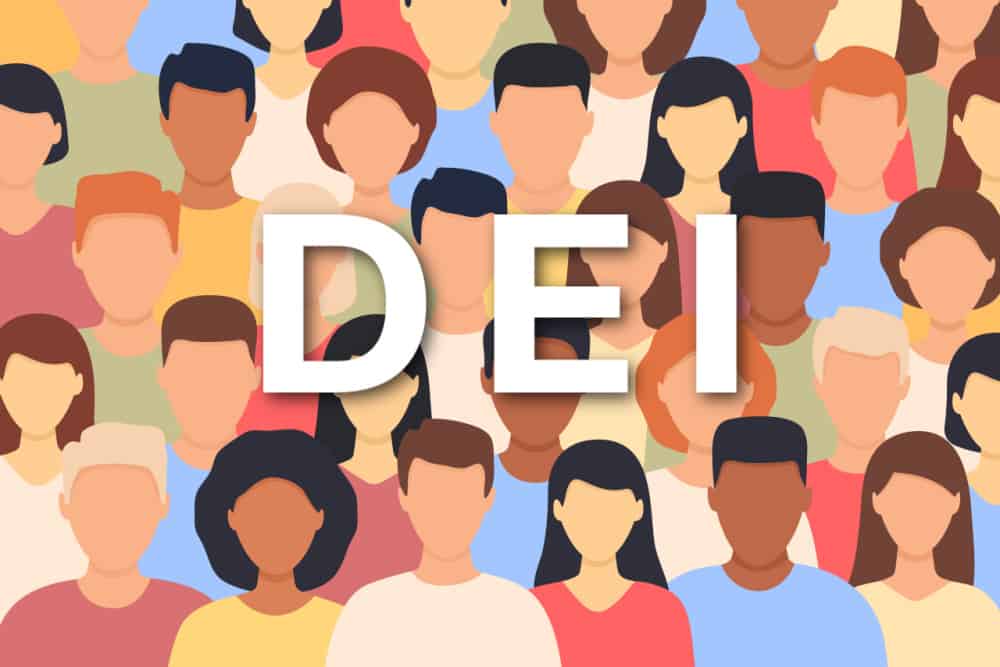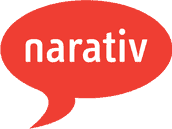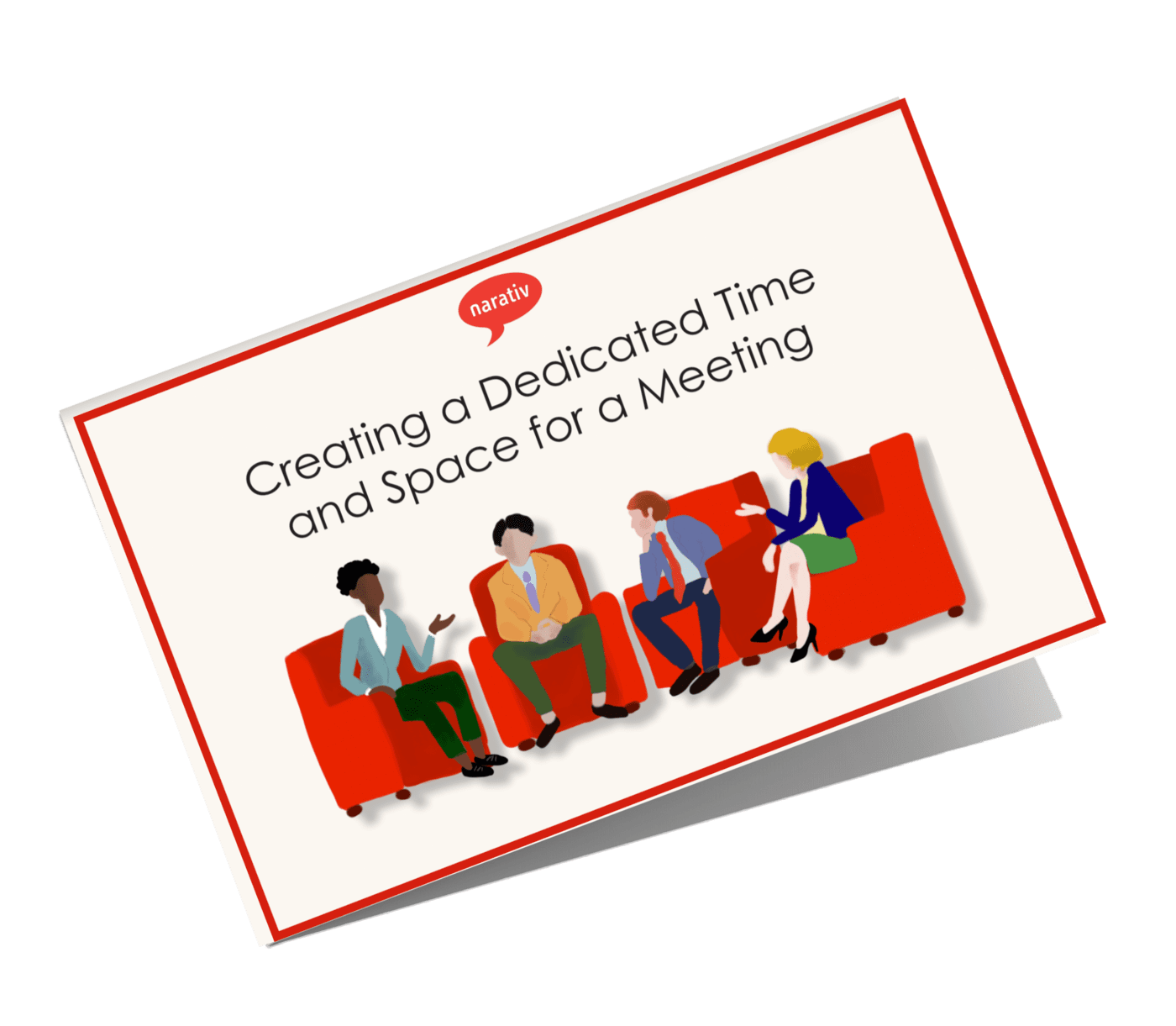If you are involved in the inner workings of the business world in any way, you’ve almost certainly heard about the growing importance of Diversity, Equity, and Inclusion (DEI) in today’s society. It’s easy for DEI to be thrown around as a buzzword companies use to make themselves look good without actually doing anything differently. However, as society continues to advance, companies that put genuine good-faith effort into understanding DEI meaning and implementing effective DEI solutions will have a massive advantage over those that only pay lip service to the concept.

For those interested in gaining a better understanding of what DEI actually means and what good implementation can bring to a business, this will serve as a short guide to familiarize you with the basics. With this foundation of knowledge, you’ll be well on your way to a company culture that is equitable and inclusive in a way that benefits and uplifts everyone.
Part 1: DEI Meaning
The first step to practical implementation is defining DEI and having a solid understanding of what it actually means as well as why prioritizing it is so important. Many sources tend to dance around the actual definition, but at Narativ we’re all about clarity.
Fundamentally, workplace DEI refers to frameworks in an organization intended to promote full participation and fair treatment for everyone, especially people who come from historically marginalized or excluded groups. There are, obviously, three components that make up these frameworks:
Diversity
Often when diversity is mentioned it is assumed to only refer to racial diversity, but in workplace DEI it is intended to refer to all possible ways that humans differ from each other. In addition to race and ethnicity, it can refer to diversity in sexual orientation, gender identity, religion, veteran status, mental or physical ability, or age.
Equity
Equity refers to ensuring that all people in an organization are treated equally and have access to the same opportunities for advancement. The aim of equity is to compensate for societal disparities that may hold a person back, including their race, where they grew up, their access to education, their disability status, or anything else that might bar them from opportunities that their business peers are easily able to access.
Inclusion
Inclusion involves building a company culture where everyone feels welcome, and that invites everyone to participate and contribute their skills and ideas. An inclusive work environment is one of respectful collaboration that eliminates barriers, discrimination, and intolerance so that everyone feels like they belong and that they are supported by equitable policies and fair management.
When referred to in a business sense, DEI usually refers to policies and initiatives a company might undertake to overcome disparities in any of these three areas. This often means taking measures to figure out where the company is lacking and taking steps to correct this gap, whether it be in hiring policies, company culture, training, or anything else that might be barring access to certain people or groups.
Making these changes may be difficult, particularly if the current policies and culture are deeply rooted, but devoting attention and resources to restructuring in this way will be greatly beneficial to your company in the long run.
Why Prioritize DEI?
When it comes to business, there always has to be a bit of cold arithmetic involved. It would be wonderful if the desire to break down barriers and build a more inclusive workplace was enough on its own to motivate most companies to commit to improving DEI in their organizations. The truth of the matter though is that implementing new initiatives and policy changes within a company requires a lot of resources. Even the most altruistic of CEOs will want to consider whether the benefits of prioritizing DEI initiatives will outweigh the costs.
The good news is that you aren’t being misled by your altruistic urges. In most cases, anything that is good for people is also good for companies, and DEI is no exception.
Nearly all data from the past decade has shown that companies that prioritize effective DEI strategies consistently outperform those that choose not to focus on diversity. Experts in DEI education suggest a number of reasons for this.
Larger Talent Pool
It makes sense that casting a more diverse net when hiring will allow you to draw from a much wider talent pool that other companies may not yet have tapped into. Putting the resources into hiring and training candidates from outside the usual box will allow you to draw in people with unique skills and mindsets that will be a huge benefit to your company.
Higher Productivity
Companies with less diversity tend to fall into ruts because there are too many people with the same perspective giving input on ways to solve problems. Hiring people from a multitude of different communities with diverse backgrounds and perspectives will lead to far more productive discussions that produce quicker and better solutions to issues that arise. This innovation and adaptability make it well worth the effort to strive for a more diverse team.
Better Retention
Companies that strive to build a supportive, inclusive, and diverse work culture are a lot less likely than others to struggle with high turnover rates. A supportive work culture will increase retention with employees from every demographic, but efforts will prove especially effective for employees with challenges and needs that other workplaces have been unable to meet. The effort to include and accommodate any disabilities, knowledge gaps, or training disparities your employees may have will be repaid with hard-working, loyal employees who are happy to give the company just as much dedication and effort as the organization has given to them.
Greater Innovation
There’s no getting around the fact that a greater variety of perspectives and experiences in one place will lead to a lot more innovation. An idea that may never have occurred to one employee may be obvious to someone from a different background with a different mindset. There is little risk of creative stagnation when a diverse team works together and everyone is freely encouraged to share their thoughts and ideas.
Part 2: How Leaders Can Champion DEI Initiatives and Drive Change to Build an Inclusive Culture
Now that we’re all clear on DEI meaning and some of the basics, what’s the next step to driving successful DEI change in your company? The obvious answer is to build a strategy for an initiative that will work for your company.
Many experts in DEI in the workplace have paved the way with their own initiative frameworks, but one size does not fit all when trying to create a more inclusive workplace. How can you as a leader drive the necessary change and ensure your initiative is successful in your organization?
We have a pretty good answer for that because this part falls right within our wheelhouse. The two greatest tools at your disposal for creating and carrying out a successful DEI initiative in your company are listening and storytelling.
Sound a little too simple? Let’s take a closer look at these tools and why they’re so useful in driving DEI.
The Power of Listening
You’ve probably, at least once in your life, had somebody try to fix a problem for you without really consulting you about what would actually help. The reason many DEI initiatives fail is because the people driving them think they know exactly what will work and fail to listen to the people they are trying to help.
When trying to create an inclusive work environment, the first and best thing to do as soon as you start hiring more diverse candidates is to ask them for their input. Everyone you hire, no matter who they are, has likely had the experience of feeling excluded or mistreated in a previous workplace. They likely have good ideas about what could be done differently by management to build a better experience for everyone.
It’s possible your team may be a little too intimidated to share their thoughts openly at first, but as you demonstrate a willingness to listen without overtalking they will become more comfortable opening up. You may find that as you listen, your perspective will be shaped by ideas that never occurred to you before, and you will find yourself far more capable of implementing changes that meet the needs of your employees.
The Role of Storytelling
On the other side of listening is storytelling. Just as it’s important for everyone in an organization to learn to listen effectively, building a culture of storytelling is one of the best ways to create an equitable workplace.
Stories exist to bridge the gap between the teller and the listener, no matter how wide that gap may be. In sharing a personal story, the teller brings the listener into their world in a way that little else can. In a diverse workplace where everyone is comfortable sharing stories, every member of the team gains the ability to empathize with each other’s perspectives and recognize their humanity. This understanding is where true equity comes from.
As a leader, you can set an example by first sharing your own personal stories during meetings. Sharing stories about your heritage, your upbringing, your early work experiences, or anything else that gives open insight into who you are as a person and a leader can encourage others to open up and share their own experiences.
Once you’ve broken the ice by sharing your own stories, it can also help to ask questions to encourage your team to share their stories to help them get to know each other. It can be helpful to hold dedicated story sessions within your company to start the ball rolling and get the practice well established.
We recently saw an excellent example of this in practice during a DEI initiative facilitated by Narativ for leaders of a Fortune 500 company. Though three of the five leaders were Caucasian and had never experienced racial discrimination as the other two had, as each leader shared a story of a time they had experienced some sort of discrimination, and a rich dialogue developed regarding how to prevent discrimination in their own company. The discussion led to decisions that greatly improved DEI within the company.
Part 3: Measuring Success
Over time as you develop and implement your company’s DEI initiative, you can track certain key metrics to measure its success. One of the easiest ways to do this is by mapping the representation of different groups within your company by percentage. Tracking these percentages over time can help guide and shape hiring policies to improve company diversity and can also help inform where better retention efforts are needed.
Another way of tracking progress is by conducting regular company surveys about whether the company is properly employing DEI measures to create an inclusive workplace culture. Regular check-ins about what’s working and what isn’t can help you to refine your approach to suit the needs of all your employees.
Part 4: Overcoming Challenges and Sustaining DEI Efforts
As with any new company initiative, there are bound to be barriers and challenges to overcome when implementing DEI measures. Some of the more common problems that arise come from unconscious hiring biases in upper management, lack of support and mentoring resources to address disparities, and a lack of diversity in the talent pool.
Problems relating to biases can be overcome with tactics such as blinding resumes to remove identifying information so that the only factors under consideration are the candidate’s qualifications. There is also software that can assist in removing human bias from the process. This, in addition to a policy of diverse hiring, can result in great strides in reducing a company’s hiring bias.
To overcome other barriers and maintain long-term commitment to DEI, consider hiring a chief diversity officer (CDO) to oversee the implementation and continuation of your company’s DEI measures. It may also help to assemble a diversity committee of employees who are passionate about improving diversity within the company to assist the CDO in recognizing the changes that are needed and developing strategies for action.
There is no sure way to know if your DEI initiatives will be successful from the start, and there will always be bumps along the way and things that require tweaking. All the same, your company’s DEI measures will be as successful as the effort you put into them. Set a concrete long-term goal to improve DEI within your company, and use that goal as motivation to overcome the challenges you may run into along the way.
Committing to a Brighter Future with DEI
Now that you’ve got an understanding of DEI meaning, principles, and strategies under your belt, it should hopefully seem a little less intimidating to get started. If you start simply with listening and developing a workplace culture of storytelling, it will become easier to overcome the bumps in the road and build a truly diverse and equitable workplace.
Don’t be afraid to take the first step, and more importantly, don’t be afraid to make mistakes as long as you’re willing to correct them and try again. Every company that has successfully implemented DEI will tell you that persistence pays off.
There is still quite a long way to go in turning the business world into a more diverse and equitable place, but as more companies take the time to understand DEI meaning and, more importantly, to make the effort to implement DEI measures, we are well on our way to making the business world and society as a whole a more welcoming place for everyone.
If you would like to learn more about how story training can improve DEI initiatives in your company, visit Narativ here.



